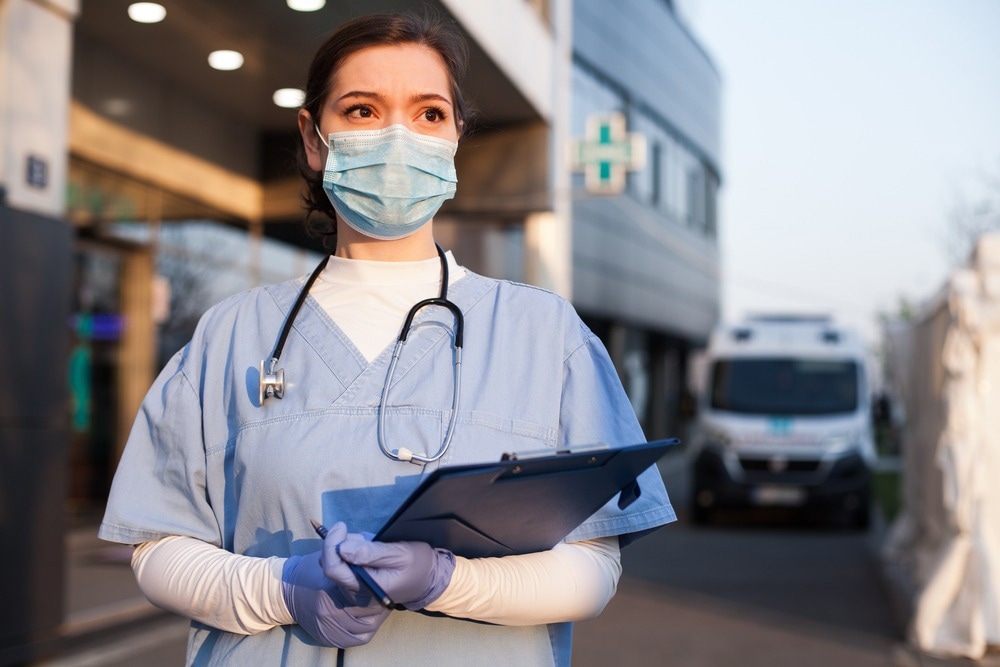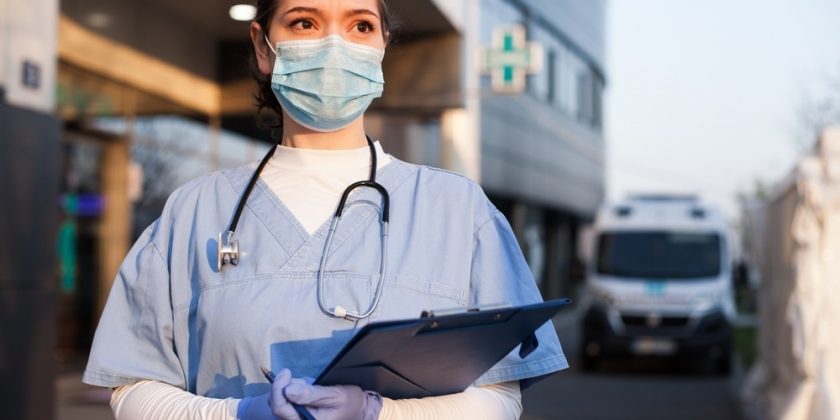Recently, the Colorado Department of Public Health and Environment (CDPHE) has determined how health care personnel (HCP) are affected when exposed to the monkeypox virus and published their findings in the Morbidity and Mortality Weekly Report. They also determined the efficacy of personal protective equipment (PPE) in protecting HCPs from the infection while providing care to patients suspected to have contracted the Orthopoxvirus infection or monkeypox.

Background
Typically, monkeypox is transmitted via physical contact with body fluids, lesions or scabs, or respiratory secretions of an infected person. As per the recommendation of the Centres of Disease Control and Prevention (CDC), HCPs must wear eye protection, a gown, gloves, and N95 or a higher-level respirator while treating patients suspected or confirmed with monkeypox infection.
It is important to evaluate the risk of monkeypox transmission to HCPs directly involved with caring for symptomatic patients. Although it has been assumed that HCPs are at low risk of contracting the infection, it has not been thoroughly assessed from the perspective of a global outbreak.
About the study
In this study, CDPHE obtained clinical and nonclinical data on HCP exposure during treatment. They interviewed patients with monkeypox and evaluated their medical records to determine if lesions were present when HCPs were exposed to patients.
The type of interaction with patients, type of PPE worn, and amount of time spent with patients was analyzed. HCPs considered high or intermediate exposure risk were offered JYNNEOS PEP vaccination and were kept under monitoring for twenty-one days.
HCPs categorized under the low-risk exposure group were asked to self-monitor for monkeypox virus infection symptoms for twenty-one days. All the participants were asked to immediately notify CDPHE in the case of experiencing symptoms.
Study findings
A total of 313 HCPs interacted with 55 patients diagnosed with monkeypox infection between 1st May 2022 and 31st July 2022. HCPs were categorized as high-risk, intermediate-risk, and low- or uncertain-risk exposures. A total of 20 candidates were designated to be under high-risk, 67 under intermediate-risk, and 226 were grouped under low- or uncertain-risk exposures.
Although all HCPs used different combinations of PPE, only 23% wore recommended PPE during exposure. 28% of the study cohort were at a high to intermediate risk of exposure to the monkeypox virus. These individuals were recommended to receive postexposure prophylaxis (PEP) with the JYNNEOS vaccine. However, only 48% of this group received the vaccine.
Eighty-seven percent of the study cohort was exposed to patients with monkeypox lesions or rash. Among these, 59% were in direct contact with the patient’s skin or lesions. The majority of the time, HCPs wore gloves; however, in some instances, gloves were not worn. Around two-thirds of encounters with monkeypox patients lasted between five and thirty minutes.
Thirty-eight percent wore recommended N95 respirator while interacting with or treating monkeypox patients. The degree of PPE usage by HCPs depended on the specific facility. For instance, HCPs associated with sexually transmitted infection (STI) clinics and community health centers were among those who showed the highest adherence to recommended PPE. In contrast, those involved in primary and urgent care settings showed the lowest adherence.
Only 38% of HCPs wore N95 respirators, 64% wore gloves, 40% used gowns, and 31% used eye protection. These low percentages were attributed to a lack of awareness of the patient’s symptoms before encountering them and the absence of monkeypox PPE guidelines and other relevant information. This study highlights the importance of increasing awareness and training among HCPs, such that they can take the necessary steps to protect themselves from exposure.
Importantly, the authors observed that no HCP developed monkeypox infection twenty-one days after exposure. This finding is extremely important as it indicates that HCPs are at low risk of contracting the infection in health care settings.
Study limitations
One of the limitations of this study is its higher dependence on data from community health and STI clinics, which might not suitably portray nationwide conditions. This is because these clinics are often alerted about the visit of suspected monkeypox patients. Hence, the HCPs are mostly prepared for these patients. Another limitation of the study is the lack of PEP vaccination data. Furthermore, data on whether monkeypox patients covered lesions or wore facemasks when interacting with HCPs, could not be obtained.
Conclusions
Minimal risk of monkeypox transmission from infected patients to HCPs has been documented in the current study. The findings are in line with other related studies conducted in the US as well as in other countries. The study also suggests that occupationally acquired monkeypox is highly unlikely if one follows every recommended prevention and control measure.
- Marshall, K.E., Barton, M., Nichols, J. et al. (2022) Health Care Personnel Exposures to Subsequently Laboratory-Confirmed Monkeypox Patients — Colorado, 2022. Morbidity and Mortality Weekly Report. doi: http://dx.doi.org/10.15585/mmwr.mm7138e2 https://www.cdc.gov/mmwr/volumes/71/wr/mm7138e2.htm
Posted in: Medical Science News | Medical Research News | Disease/Infection News
Tags: Body Fluids, Efficacy, Eye, Health Care, Healthcare, Laboratory, Monkeypox, Mortality, Personal Protective Equipment, PPE, Prophylaxis, Public Health, Rash, Respiratory, Skin, Vaccine, Virus

Written by
Dr. Priyom Bose
Priyom holds a Ph.D. in Plant Biology and Biotechnology from the University of Madras, India. She is an active researcher and an experienced science writer. Priyom has also co-authored several original research articles that have been published in reputed peer-reviewed journals. She is also an avid reader and an amateur photographer.
Source: Read Full Article
